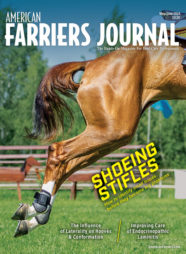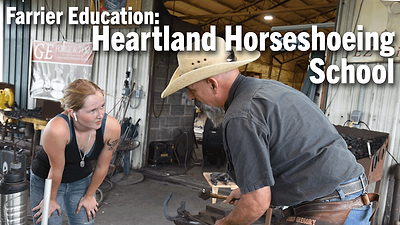In the fall, some owners and caretakers are faced with the onset of obvious foot pain in their horses for no apparent reason. What’s going on?
The vast majority of laminitis cases have a hormonal/endocrine root. There is a peak in the spring, related to grazing young high sugar growths of grass. A second peak occurs in the fall, but the cause is more complicated.
Grass undergoes a period of regrowth in the fall in some areas, but many cases of fall laminitis aren't even on pasture. There is a natural rise in the hormone ACTH from late summer through end November in all horses. ACTH stimulates release of cortisol.
In older horses and horses that are early cases of Cushing’s disease, this rise can be very exaggerated and can cause or worsen insulin resistance, often pushing the horses into laminitis. Reversing this means attacking on the dietary end and also using medication, pergolide, to control exaggerated ACTH release.
Insulin resistance is managed with the same dietary adjustments no matter how it is caused. This can be adjusted up or down to maintain a lean body weight, but do not starve the horse.
The horse should be fed primarily grass hay with a combined sugar (ESC) and starch level below 10%. A good starting point is to feed 2% (20 pounds per 1,000 pounds) of ideal body weight or 1.5% of current body weight, whichever is larger.
There are several vitamins and minerals that play key roles in insulin function. Keep mineral intakes at correct levels and balance them based on the results of hay analysis or regional average analysis figures. Across the board, these are fundamental adjustments that can be made:
• Normal magnesium status is important to maintaining cellular sensitivity to insulin.
• Iron has been shown to worsen IR. Avoid supplements with any added iron in the ingredients list, including ferric and mono and dicalcium phosphate, which are heavily contaminated with iron.
• Hays from many areas are also deficient in copper and/or zinc, but with adequate to high manganese.
• Hooves recovering from laminitis need balanced minerals and adequate protein. Biotin supports hoof growth and pyridoxine is needed for amino acid/protein metabolism.
• Jiaogulan provides potent support for nitric oxide production in the vessels by counteracting hoof blood vessel constriction that can occur with IR and Cushing’s.
• Vitamin E is needed because it is always deficient in hay. Feed 2 IU (international units) per pound of body weight daily. Vitamin E requires fat for absorption so feed a liquid E in oil or mix a powdered E into oil.







Post a comment
Report Abusive Comment